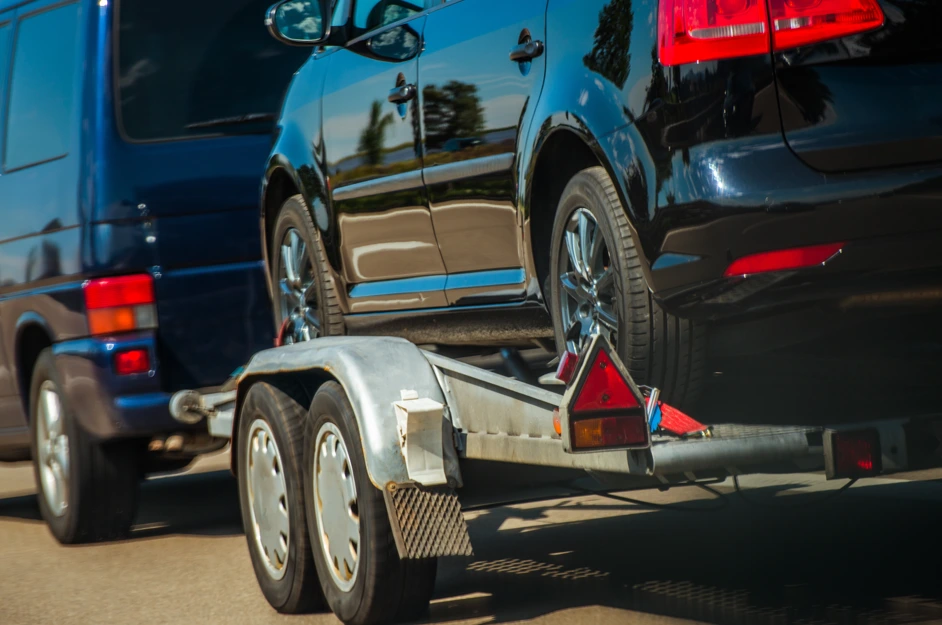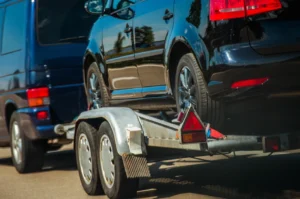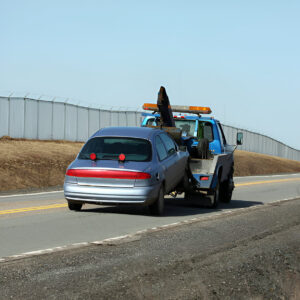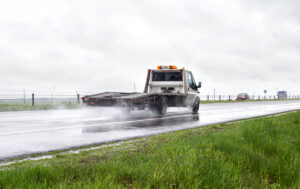Mishaps tend to happen at the worst possible times. You’re running late for an important meeting, need to drop your kid off at school on time, or promised your wife you’d finally take her out on a date. You jump in your car, and… nothing.
Your engine won’t turn over, or maybe it’s making that grinding sound that means your wallet is about to get lighter. You need a tow, but then you remember, your parking brake is on, and in your panic, you can’t remember if you put the car in park or left it in gear. Now you’re wondering: can they even tow my car like this?
The short answer is yes. But there’s definitely a right way and a wrong way to handle it. Here’s how professionals handle emergency towing in NY.
What Does “Brake Engaged” Mean?
Before we get into the nuts and bolts of towing, let’s clear up what we’re talking about. When people say brake engaged, they usually mean one of several things.
The Parking Brake
This is also referred to as the emergency brake or e-brake, and it works differently depending on your car. In older vehicles, it’s usually a lever between the seats or a pedal on the left side. Newer cars often have electronic parking brakes, just a button or switch. But the parking brake typically only affects the rear wheels, regardless of whether your car is front-wheel or rear-wheel drive.
The Transmission
If your car is in Park (automatic) or in gear (manual), that’s a whole different type of brake that prevents the wheels from turning. Sometimes people leave their car in gear and engage the parking brake, which creates a double challenge for tow operators.
Electronic parking brake systems are usually more complicated. They use motors to apply the brake pads, and releasing them usually requires the car’s electrical system to be functioning. When your battery is dead or the car won’t start, these systems can be stuck engaged.
How Do Professionals Handle Cars with Brakes Engaged?
Four words: access first, force later.
Most people don’t realize that professional tow operators don’t just start dragging cars around with brakes engaged. The first step is almost always trying to get into the vehicle and release the brakes properly.
Most tow drivers are surprisingly good at gaining entry to vehicles. They carry slim jims, wedges, and other tools specifically designed to unlock car doors without damage. Once they’re inside, they can release the parking brake, shift the transmission to neutral, and turn the wheels straight for easier towing.
This prevents damage to the car and makes the towing process much safer and easier. Dragging a car with brakes engaged can damage the brakes, tires, and even the transmission or differential. Professional operators know that preventing damage saves everyone time, money, and headaches.
What Happens When the Brakes Won’t Budge?
Sometimes, despite best efforts, the parking brake simply won’t release. Maybe the cable is seized, the electronic actuator has completely failed, or the brake mechanism is frozen from corrosion.
In these cases, towing companies have special equipment to handle the situation.
1. Wheel Dollies
These small platforms go under the wheels with engaged brakes, allowing the car to be towed without those wheels touching the ground. The tow truck essentially carries the stuck end of the car while the other end rolls normally.
2. Rollback Tow Trucks
Also called flatbed tow trucks, these can pick up the entire vehicle without any wheels touching the ground. This eliminates the brake engagement problem entirely, though it’s more expensive and not always available for emergency calls.
3. Go-Jaks or Wheel Skates
These are dollies that slip under individual wheels, allowing cars with engaged brakes to be moved. They’re particularly useful in tight spaces where a full-size tow truck might not fit.
The key point is that professional towing services have options. They’re not limited to just dragging your car down the street with brakes screeching and tires sliding.
What Not to Do When Towing Cars with Brakes Engaged?
Professional towing companies know what not to do. But mistakes happen, and a refresher is always a good idea.
1. Never Force It
Dragging a car with fully engaged brakes will damage something. At minimum, you’ll ruin tires. At worst, you can damage brake components, transmission parts, or even the vehicle’s frame or suspension.
2. Don’t Ignore Transmission Position
Even if you release the parking brake, a car in Park or in gear can still resist towing. The transmission needs to be in neutral, and the steering wheel should be unlocked.
3. Electronic Parking Brake Shortcuts Don’t Work
Some people think they can just disconnect the battery or pull fuses to release electronic parking brakes. This usually doesn’t work and can actually make the situation worse by preventing the normal release procedures from working.
Also Read: Top 10 Reasons You Might Need Emergency Towing Services
Professional Towing Services for the Win!
Cars with engaged parking brakes might seem like a nightmare scenario for towing, but professional services deal with this situation regularly. The key is using the right techniques, having the proper equipment, and taking a systematic approach that prevents damage while safely moving the vehicle.
The most important thing to remember is that forcing the situation never ends well. Professional towing services exist precisely because moving disabled vehicles safely requires knowledge, proper equipment, and experience dealing with all the complications that can arise.
When you need reliable emergency towing in NY that knows how to handle any situation professionally, A1 Towing & Collision Inc brings decades of experience and the right equipment to solve even the most complicated towing challenges.
Whether you’re dealing with a dead battery and electronic parking brake or a completely seized brake cable, we’ve got a way out for you. Leave us a call and we’ll be there in a jiffy.





